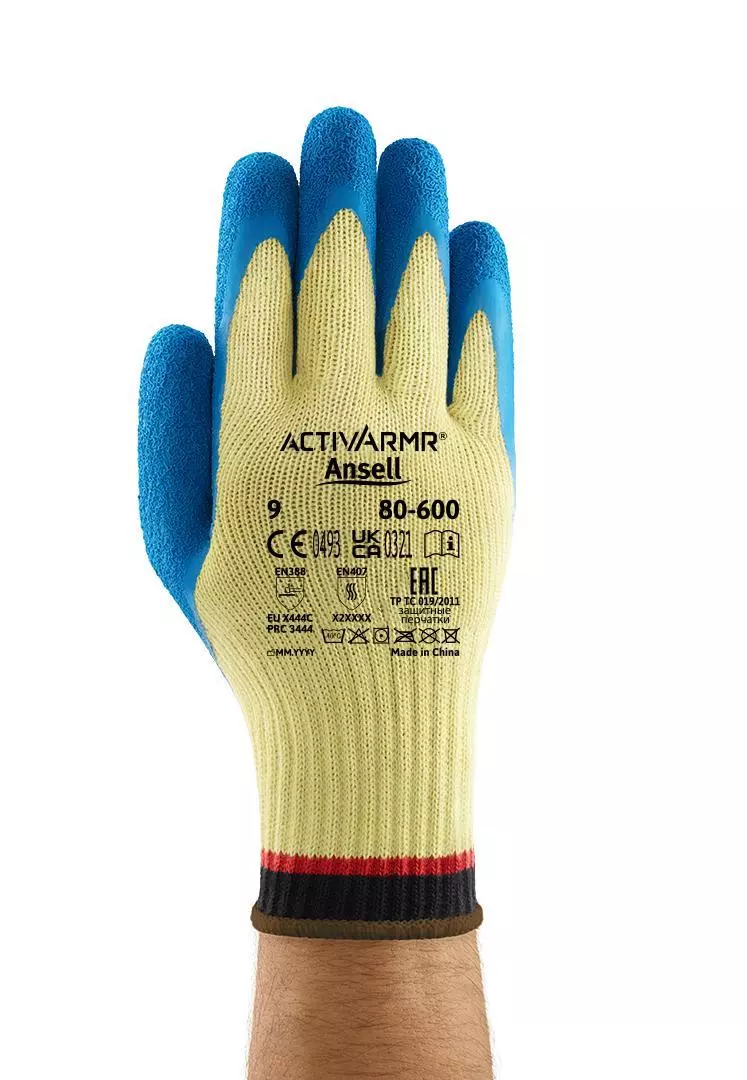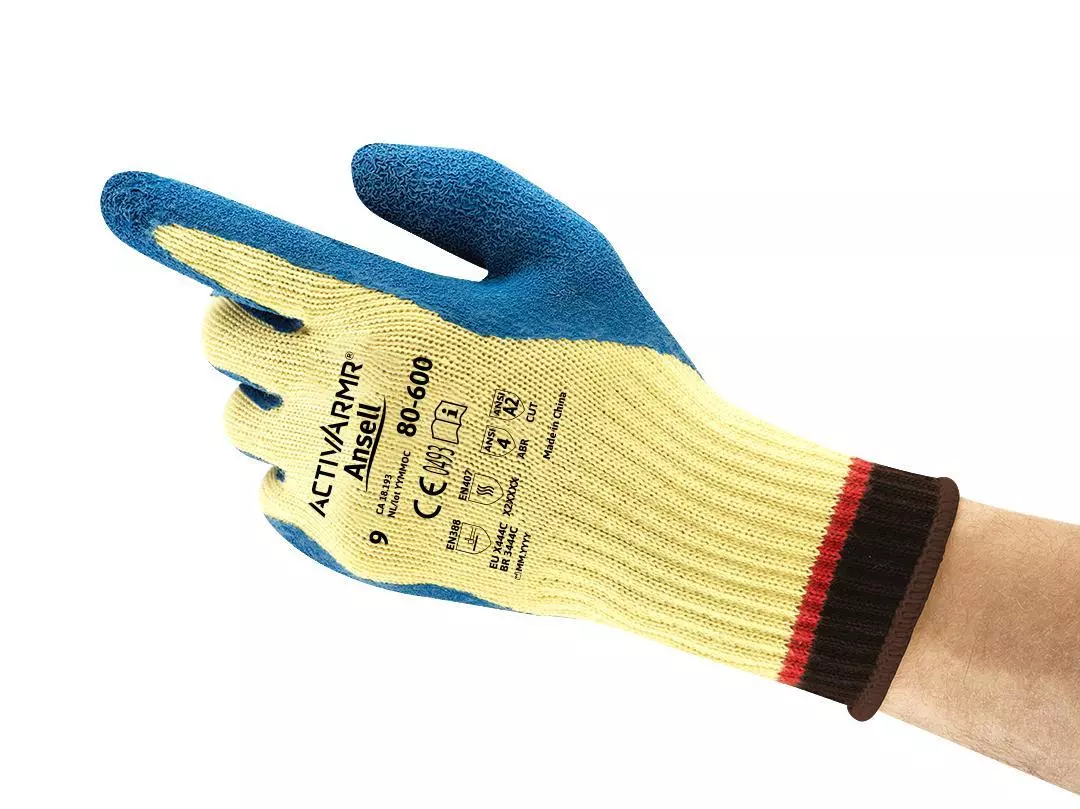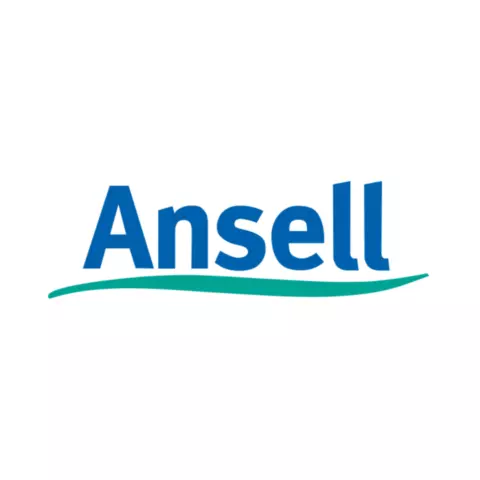Product description
Description
Enhanced grip: ActivArmr® 80-600 industrial gloves' natural rubber latex coating features a raised crinkle finish, enhancing grip performance in both dry and wet conditions
Advanced defenses: These abrasion-resistant gloves' combination of a natural rubber latex coating and Kevlar® knitted liner means they satisfy ANSI A2/EN ISO C cut resistance standards, enabling workers to safely handle glass, metal and plastics
Added convenience: ActivArmr® 80-600 thermal work gloves also come in varying sizes, to cater for all workers and prevent workplace injuries
Recommended for
Forging operations
Extruding, bending and punching shapes
Product Details
Antistatic: No
Length: 250-280 Mm/ 9.64-11.02In
Available Sizes: 7, 8, 9, 10, 11
Coating Color: Blue
Coating Material: Natural Latex Rubber
Construction: Knitted
Cuff Style: Knitwrist
Finishing: Palm Coated
Gauge: 10
Liner Color: White
Liner Material: Kevlar®
Silicone Free: No
Washing Temperature: 40 °C (104 °F)
About Coated Cut Protection Glove
Coated Cut Protection Gloves provide essential hand safety with cut-resistant materials and specialized coatings for enhanced grip. Ideal for construction, manufacturing, and handling sharp materials, these gloves offer both protection and dexterity for demanding work environments.
- Cut Resistant
- Machine Washable
- Hand Protection
Standards and labels
Ansell delivery terms
Free delivery for all Ansell products
788,39 €
Price per 6 packages (72 pairs)
10,95 € / pair
Free delivery
A carton contains 6 packages (72 pairs)




